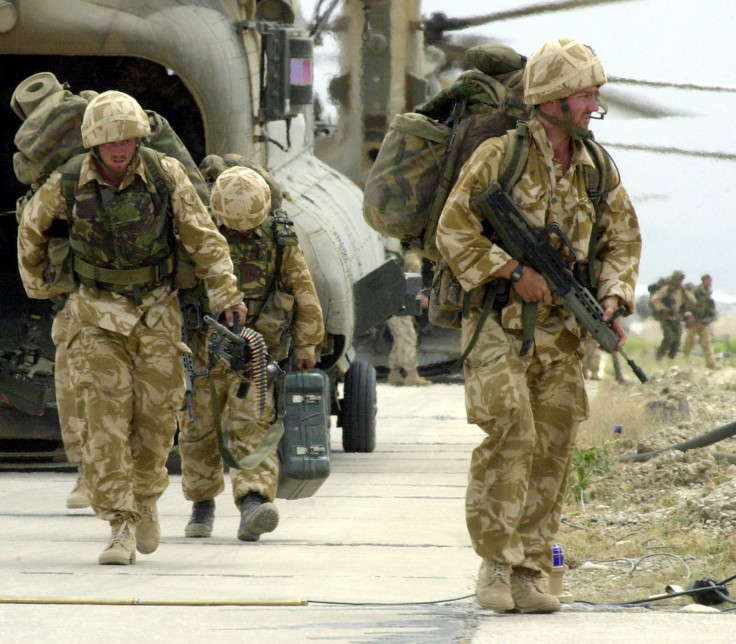The Royal Marines' 350th Anniversary: First Boots on the Ground in Afghanistan

The lowering of the Union flag at Camp Bastion in Helmand province last weekend marked the end of 13 years of British military involvement in Afghanistan.
Since the invasion in 2001, an estimated 21,000 Afghan civilians and 453 British military personnel have died in the country, and the financial cost of the mission is over £40bn.
Although the invasion followed the events of 9/11, for the UK, the war really started in 2006. In the period leading up to then, only five members of the forces had died – three of which from suicide.
Between 2002 and 2006 the UK deployed armed forces and civilian personnel to Afghanistan to help in its reconstruction. The aim of the mission was to prevent Afghanistan from "again becoming a safe haven for terrorists" – by building a foundation of security and government institutions.
At its largest, Camp Bastion – constructed in 2006 by the 39 Engineer Regiment – was the size of Reading.
First deployment
The UK participated in US-led air strikes against al-Qaida and the Taliban before becoming part of Nato operations. In November 2001, the first British troops were deployed when 40 Commando Royal Marines (40 Cdo) helped secure Bagram airfield near Kabul. Marines later patrolled Afghanistan's capital city.
The deployment of 45 Commando Royal Marines (45 Cdo) to Afghanistan took place in 2002, to help search for Taliban and al-Qaida fugitives – in military operations conducted under the name Operation Herrick. Contact with enemy forces was expected to be heavy, yet little action was seen, with no Al-Qaida or Taliban forces being found or engaged.
Operation Herrick
In 2006 to the present day, Operation Herrick saw 42 Commando Royal Marines (42 Cdo) deployed to Helmand Province as part of Nato efforts to stabilise Afghanistan in the midst of a resurgent Taliban.
42 Cdo were to secure the area around Lashkar Gah while infrastructure was installed by RAF and Army engineers, for the forthcoming deployment by 16 Air Assault Brigade.
The Marines engaged in frequent firefights with the Taliban. By April, the 16 Air Assault Brigade (16 AA Bde) were fully deployed and began efforts to bring security to the region.
Later in 2006, 3 Commando Brigade, incorporating 42 Cdo, took over from 16 AA Bde, with the bulk of RM forces deploying in later September. The Brigade carried on 16 AA Bde's mission of securing and holding strategic points such as Lashkar Gah, the town of Garmsir, and various district centres. Aggressive patrols were carried out to try and flush out the Taliban.
In late 2006, 3 Commando Brigade relieved 16 AA Bde in Helmand Province, Afghanistan, as part of Operation Herrick.
October 2006 to April 2007
45 Cdo were deployed to Helmand Province during this period to act as rapid reaction force for the multi-national Provincial Reconstruction Teams.
They also established the Operational Mentoring and Liaison Team, who worked with indigenous Afghan National Army forces, carrying out training tasks and joint operations against the Taliban.
Overall, over 14,000 Marines have been deployed on operations in Afghanistan. In the past year, the number of UK bases across Helmand has reduced from 80 to 12 as they are handed over to Afghan forces or dismantled, in line with growing Afghan security capability.
The success of the military involvement is unknown, depending on whether the Afghan army and police forces will be able to control the state and create security for the next generation of Afghans.
© Copyright IBTimes 2025. All rights reserved.






















